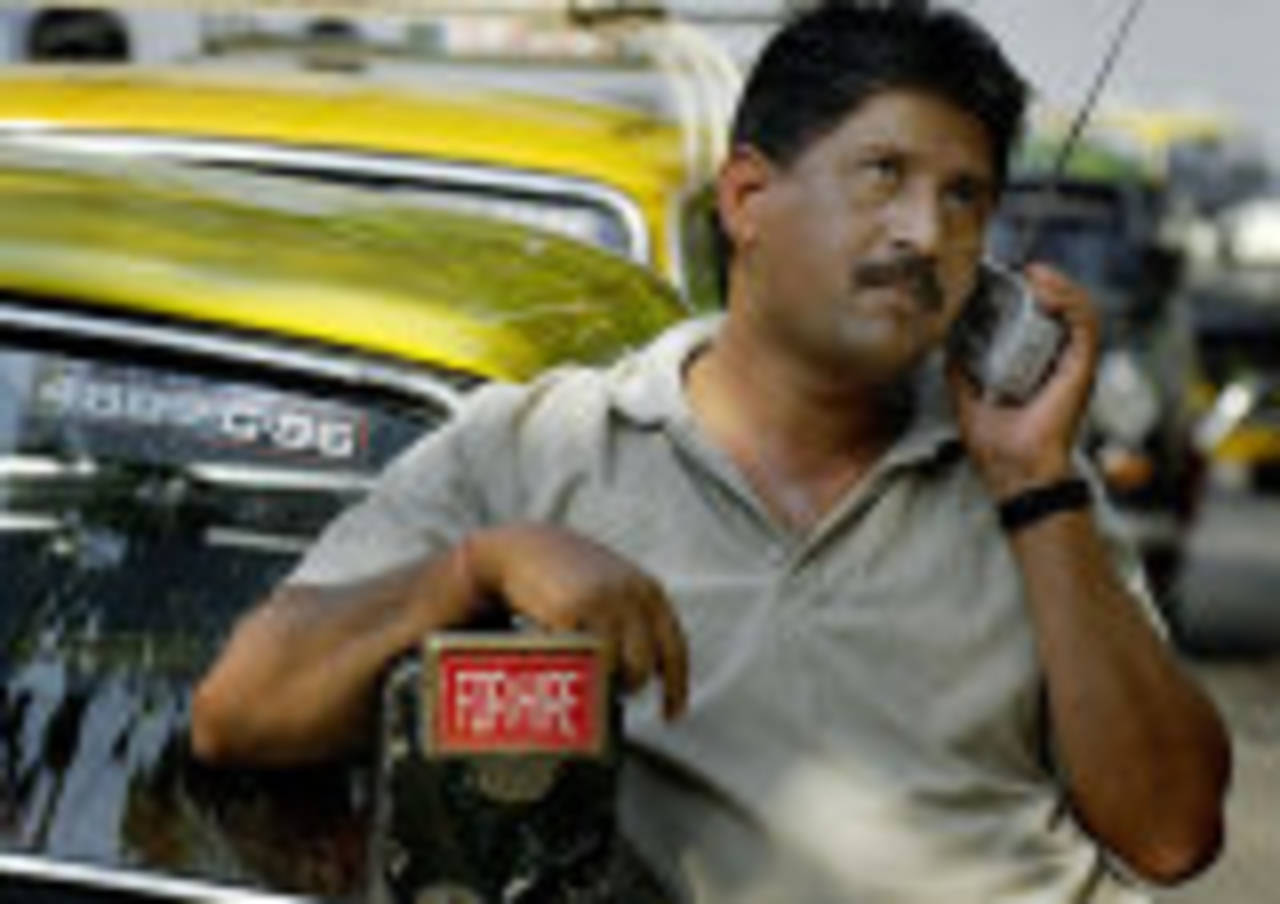Saraiya the radio star
Suresh Saraiya is what your typical commentator would be: not short of an analogy, or a story to go with it
Sidharth Monga
25-Feb-2013

AFP
Suresh Saraiya's voice, for a long time, had been the link between the Indian fans and their cricket. With Saraiya here in Karachi for a commentary stint, one finally got to add a face to the voice. He is what your typical commentator would be: not short of an analogy, or a story to go with it. He has a storyteller's voice, and a storyteller's eyes, which gleam anew every time he starts a new story.
On the silver jubilee of India's World Cup success, he has an interesting tale to tell of the days India, in one-day cricket, were respected as much as Bangladesh or Hong Kong are today. "As you can see Hong Kong here hanging in [they had at a point reduced Pakistan to 161 for 7], trying to justify their place here, but nobody takes them really seriously. India were much the same before the 1983 success.
"And we ourselves never took the one-day game seriously. Nineteen eighty-three just happened. Even AIR didn't consider it worth sending a commentary team to England. We were supposed to go, but just before the tournament we were told we were not going."
But Saraiya has commentated on a successful day or two. None less than when India chased 403 successfully on the 1975-76 tour of the West Indies. Ravi Chaturvedi, his colleague and a famous Hindi commentator, and Saraiya apparently fought with each other; they both wanted to be on air when the winning runs were scored. The most embarrassing moment for Saraiya, and one of the funniest in a commentary box, came on the same tour when Bishan Bedi dropped Clive Lloyd off his own bowling in the Jamaica Test, and also hurt his little finger in the process.
"I said on air, 'Bedi has dropped Lloyd when he went for a return catch and hurt his…' and then I stopped. I said the same thing again and stopped. I was growing conscious of holding the listeners up, but I didn't know then what the little finger was called. In Gujarati schools, they
don't teach you the human anatomy beyond eyes, ears and nose. I asked Ravi for help, showing him my little finger.
"Ravi said, 'Okay you go, I will handle it.' How could I tell him that I wanted to know what you called it, and that I didn't want to relieve myself? In the end I said, 'Bedi has dropped Lloyd when he went for a return catch and hurt the smallest of the four fingers on his left hand.'"
Saraiya remembers vividly when he made his debut in 1965; he had Vijay Merchant and Dicky Rutnagur for company then. "It was like bowling your first over on debut to Sachin Tendulkar and Sourav Ganguly." Manjrekar and he went back a long way. "There was a Shetty restaurant, 'Alankar', near Merchant's office in Bombay. They had a blackboard for the daily menu, but when a Test match would be on I would go and listen to the commentary, maintain updated scores along with my own comments. Manjrekar liked what I wrote, and my remuneration would be one plain dosa and one filter coffee for the day's work."
Commentary, for him, is like playing cricket: you need to know the game inside out, and you need to have the right technique, which is a good voice, clear thoughts, and the play of phrase. Saraiya must have had all that, one can tell that – because when he tells a story he generally has your attention, and doesn't leave you disappointed by the end of it.
Sidharth Monga is an assistant editor at ESPNcricinfo